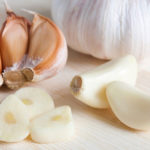Distinguishing between Chinese and Vietnamese vegetables can be a challenge for homemakers concerned about their family’s health. This guide will help you identify the differences between the two, ensuring you make informed choices when purchasing produce.
1 Garlic
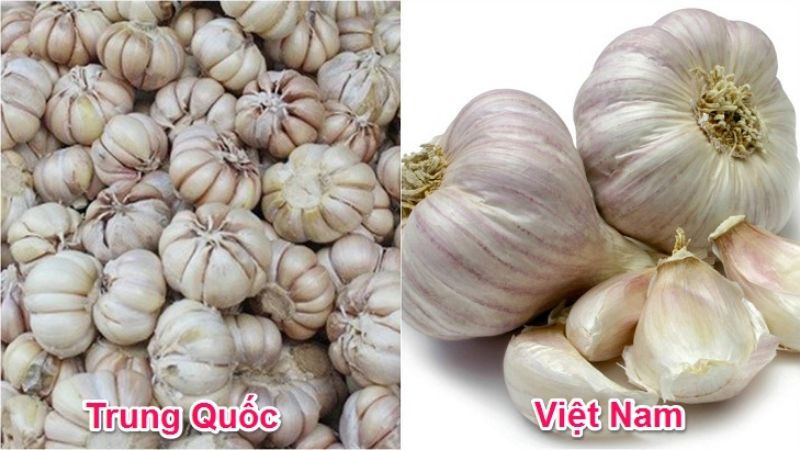 Garlic
Garlic
-
Chinese Garlic: Bulbs are large, with ivory or pale yellow skins that are easy to peel. Cloves are also large, with fewer segments and less pungent oil, giving off a sharp smell.
-
Vietnamese Garlic: Bulbs are smaller, with white or purple skins that are difficult to peel. Cloves are smaller, with more pungent oil, a pleasant aroma, and a slight spiciness. Ly Son garlic, in particular, has very small bulbs, white in color, and a mild fragrance without the sharpness.
2 Dried Onion
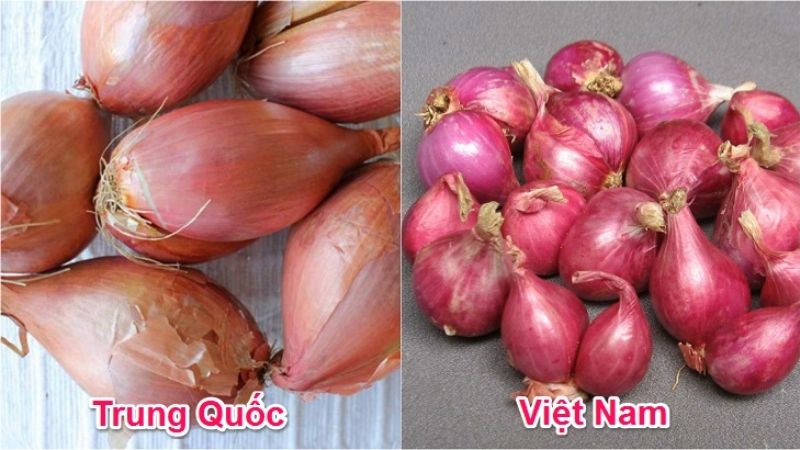 Dried Onion
Dried Onion
-
Chinese Dried Onion: Characterized by thin, light pink skins, each bulb typically contains a single clove, and it doesn’t cause eye irritation when cut. It also lacks the sharp onion aroma.
-
Vietnamese Dried Onion: On the other hand, these onions have multiple layers of purple skins, and each bulb contains multiple cloves. They tend to make your eyes water when cut and have a sharp aroma. When fried in oil, they release a delightful fragrance.
3 Onion

-
Chinese Onion: These onions have shiny, reddish-brown or reddish-orange skins, and their shape is usually round. When cut, the flesh is light green or white-green, with a mild taste and less pungent aroma.
-
Vietnamese Onion: The bulbs are smaller and slightly flattened. The skins are prone to scratches and have a yellow or yellowish-brown color. When cut, the flesh is ivory-colored, spicy, and pungent.
4 Ginger
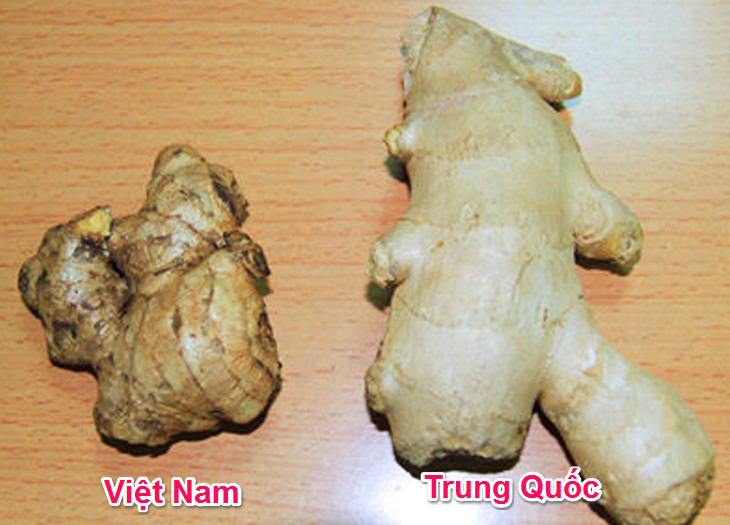
-
Chinese Ginger: The roots have a shiny, smooth, and clean appearance, with large bulbs and fewer surface wrinkles. The core is pale, free of fibers, and the wrinkles are faint. The taste is also mild.
-
Vietnamese Ginger: Bulbs are smaller, with a rough and sandy surface, and more wrinkles. The core is bright yellow or dark yellow, fibrous, and has a distinctive spicy and fragrant taste.
5 Cabbage

-
Chinese Cabbage: Smaller heads with dark green outer leaves, loosely wrapped, making them easy to peel. When cut in half, you’ll notice many holes, and the leaves don’t hold together well.
-
Vietnamese Cabbage: Larger heads with light green outer leaves, tightly wrapped, making it challenging to peel. Cutting it reveals minimal gaps between the leaves.
6 Chinese Cabbage
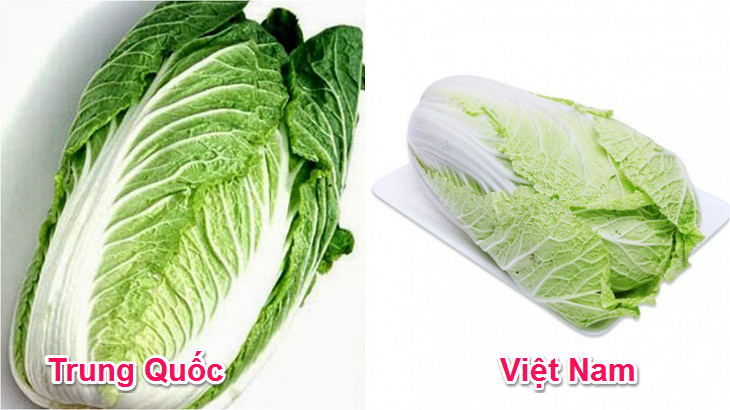
-
Chinese Chinese Cabbage: Elongated heads with dark green leaves and a less sweet taste.
-
Vietnamese Chinese Cabbage: Rounded heads with light green or very pale leaves and a mild sweetness.
7 Broccoli

-
Chinese Broccoli: Evenly sized florets that are large and a deep green color, with stems that match in color.
-
Vietnamese Broccoli: Uneven, rough florets that are a lighter green than their Chinese counterparts, with stems of the same lighter shade.
8 Carrot

-
Chinese Carrot: Uniformly sized, shiny, and clean roots with a deep orange color. They often lack stems or show signs of blackening at the top due to prolonged storage.
-
Vietnamese Carrot: Less uniform in size, with a yellow-orange color, a rough and sandy surface, and green stems.
9 Pumpkin
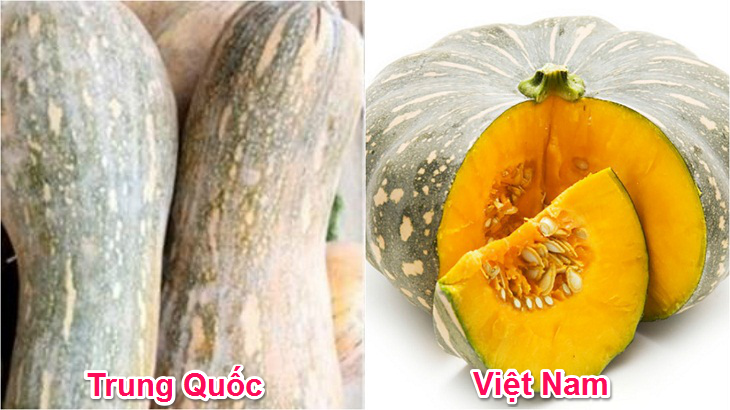
-
Chinese Pumpkin: Larger in size, with elongated fruits, shiny skins, and colors ranging from light green to orange.
-
Vietnamese Pumpkin: Smaller, rounder, or shorter fruits with rough, dark green, or brownish-orange skins.
10 Tomato

-
Chinese Tomato: Large, round, and shiny fruits without stems. They tend to stay fresh longer due to the use of preservatives.
-
Vietnamese Tomato: Smaller, with pointed ends, resembling chicken eggs, and they have stems.
11 Potato
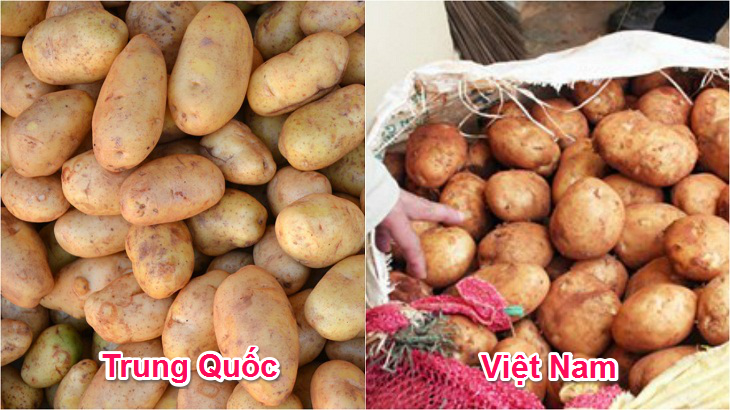
-
Chinese Potato: Oval-shaped roots that are slightly elongated, with thick, dark pink skins, and a deep yellow core. The eyes are large and deep.
-
Vietnamese Potato: More rounded oval shape, less uniform, with thin, easily scratched skins that are yellow-brown. The core is light yellow, and the eyes are shallow.
With these simple and memorable tips, you can easily differentiate between Chinese and Vietnamese vegetables, ensuring you make safe and informed choices when purchasing produce.
How to Effectively Treat Fishbone Issues at Home
Everyone loves feasting on the deliciousness of fish during the holidays. But, unfortunately, choking on fish bones is an unavoidable issue that may lead to devastating consequences if left unattended for a prolonged period. Let’s see how Dien May Xanh can help us out when fish bones get stuck in our throat.




























